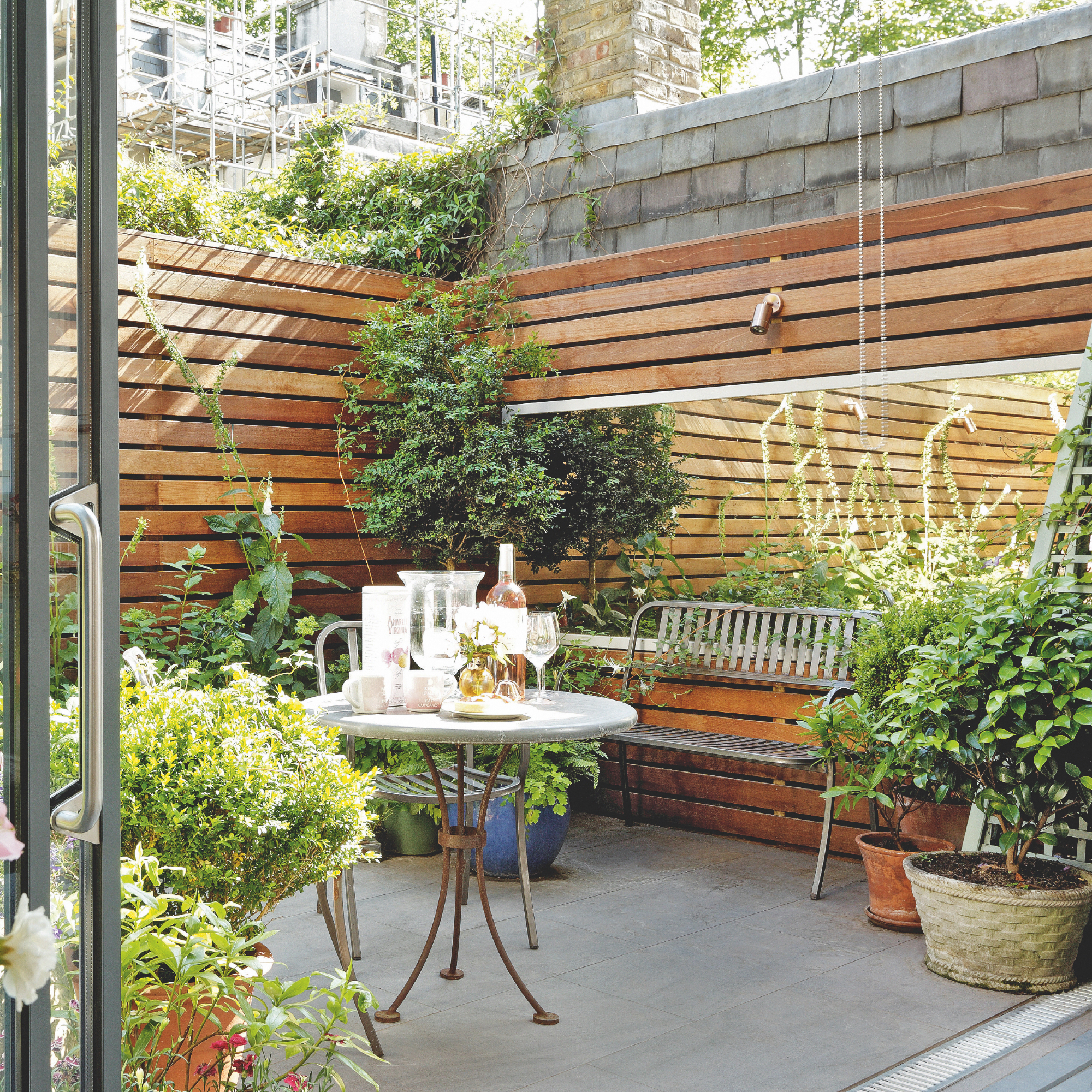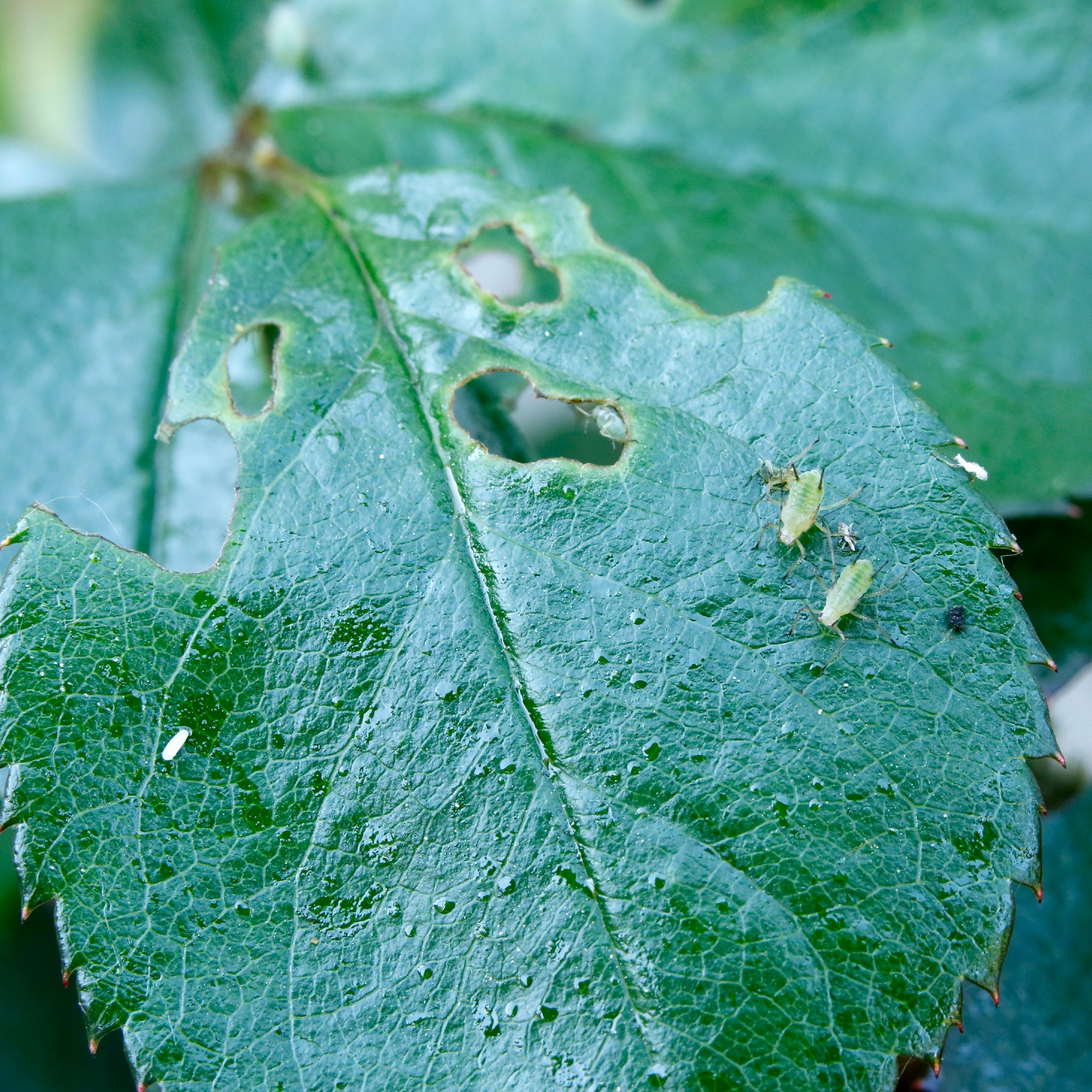
Growing outdoor plants in containers adds visual intrigue to a garden, but it also allows those with smaller gardens or balconies to grow their flowers and crops. It’s not all fun and games, though. Growing plants in pots comes with its struggles, and there are many container plant problems you have to contend with.
Yes, while there are oodles of container garden ideas to suit any size garden, any style, or budget, creating a container garden comes with its risks. If you make just one container garden mistake, you may find that pests, disease, and stunted growth ruin your dreams of potted goodness.
But nailing a container garden isn’t just about arranging the pots in your outdoor space. You also need to know how to deal with these complications, and that’s exactly why we’ve asked the experts to share their solutions to these common container plant problems.
Container plant problems
'Growing in containers can be really satisfying and means even the smallest of spaces can have something beautiful growing,' explains Morris Hankinson, director of Hopes Grove Nurseries.
But it’s important to note that these benefits of container gardening can only be enjoyed when you take care of the container plants within the pots. So, check out five of the most common container plant problems and everything you need to know about fixing them.
1. Annoying pests

Placing pots of plants or crops on your patio, balcony, or decking area is like offering the pests in your garden an all-you-can-eat buffet. They'll simply fly onto or crawl up the pots, and before you know it, your container plants are overrun with aphids, slugs, whiteflies, and more.
These pests can pose a serious threat to your container garden, and John Clifford, garden expert at Gardenstone, explains, ‘Pests such as bugs and insects can damage plants by sucking sap and spreading disease. They can also eat your plants, and having them in a container makes it easy for the pests to get to the roots.’
This is why it’s a good idea to watch for any signs of pests. These signs include:
- Visible insects.
- Slug or snail trails.
- Discoloured leaves.
- Webbing on leaves.
- Misshapen, chomped leaves.
Solution: The only way to save your container garden plants from pests is to keep the pests away, and how you do that depends on the pests present. For example, you could use pot feet or copper tape to keep slugs and snails at bay.
Alternatively, you could sprinkle a natural insecticide such as diatomaceous earth over the top of your compost, as the sharp edges will stop any pests that walk or slide over your pots.
Flying pests are a little trickier to handle, but many gardeners have found success in spritzing their outdoor plants with a mixture of water and a strong-smelling essential oil, such as neem oil.
Whatever option you choose, John suggests, ‘Use natural pesticides instead of chemicals, as this will prevent your plants from getting damaged in the process.’
2. ‘Leggy’ plants

Container plants are often guilty of becoming ‘leggy’ - and this essentially means that the stems grow long and spindly, with only a small amount of leaves or flowers growing right at the top of the stem.
This can not only affect the appearance of the plant, but it can also affect its health. So, it’s best to tackle this problem as soon as you can,
Solution: One of the best ways to fix leggy plants is to keep up with pruning requirements. Research the plants in your container garden and keep them on top of deadheading while only cutting back as much or as little as these specific plants require.
Moving your leggy container plants to a sunnier location could also work in your favour, as many plants become spindly or leggy to reach further towards the sunlight.
And while there are many shade-loving plants out there, it may be that your specific container plants would prefer the sunnier side of the garden.
3. Yellowing leaves

There’s nothing more annoying than seeing the once-green leaves of your container plants turning yellow - especially when you don’t know the cause. However, most experts agree that yellowing wilted leaves is a common sign of overwatering or drainage issues.
In fact, this is one of the main reasons why your potted bamboo is turning yellow. And this container plant problem is also pretty common, as it’s hard to navigate drainage when you’re planting things in pots rather than in the ground.
Solution: If the leaves of your container plants are turning yellow, your first port of call should be to check the containers in which you planted them.
If they only have one drainage hole in the middle, you may need to drill some more or buy new pots entirely. After all, it’s essential to give excess water the chance to escape.
Morris explains, 'Always make sure your container has good drainage. Standing containers up on pot feet or bricks can be useful as well, especially in winter. If plants growing in containers are overwatered or have no drainage, the roots will rot, and the plants will not survive.'
Then, monitor your watering habits. While it’s important to maintain a regular and consistent watering schedule when watering your container plants, it’s also fair to acknowledge that outdoor plants require different levels of watering depending on the time of year.
So, focus on keeping the soil moist but not too wet or saturated. If you’re worried about under or overwatering your container plants, you could also consider self-watering plant pots.
4. Diseases

Container garden plants are highly susceptible to fungal diseases, much more so than the plants in your garden borders. Signs of container plant diseases include:
- Black spots on the leaves.
- Grey, fuzzy mould on leaves, fruit, and flowers.
- White powder on leaves and flowers.
- Red pustules (caused by rusts) on the underside of leaves.
Solution: Most of the time, container plant diseases are caused by a lack of airflow, too much water, and a lack of pruning. In fact, most fungal diseases are a result of overcrowding.
To prevent this, make sure that you either dedicate one container for one plant, choose a large enough container that will give multiple plants the space they need to grow, or keep on top of pruning. This will improve the airflow in the containers and prevent waterlogging.
Morris says, 'There are a few ways to be sure the container is the right size but generally the best way to be sure is to plant into a container which is five to six centimetres bigger than the pot the plant comes in allowing enough root space for your plant to grow.'
It’s also important to make sure that your containers have drainage holes, and you could even consider watering your plants from the bottom.
5. Stunted growth

Have your dreams of big, vibrant container plants been squashed by small plants with stunted growth? Don’t worry, this is a common container plant problem and something that is generally caused by a lack of growing space or incorrect watering.
In many cases, you may find that your container plants simply don’t have the space to grow in the way that you want them to grow. You may be able to visibly see this, too, as the roots may poke out of the drainage holes.
Alternatively, you might not be watering your plants enough. While it can take time to gauge the correct watering schedule for your container plants, just remember that the key is to not let the soil dry out completely.
Solution: It’s easy to fix stunted growth in container plants, as you either need to re-pot them into bigger pots where they can grow bigger and better or simply water them more. If this still doesn’t fix your problem, consider moving your pots to a warmer area of the garden to allow for better photosynthesis.
John echoes this, stating, ‘If you have a plant in a container that needs to grow particularly deep or wide roots, then it'll struggle to grow in a smaller pot. I recommend moving this plant into the ground if possible or simply opting for a large container from the get-go.’
FAQs
What do you put in the bottom of a plant container?
Although it’s long been thought that adding rocks or gravel to the bottom of your plant container can aid with drainage, it can actually have the opposite effect. In fact, it can contribute to waterlogging and ultimately affect the health of your plant.
In most cases, you don’t need to put anything at the bottom of a plant container. As long as you have enough drainage holes to prevent waterlogging, your container plants should thrive.
How often should you change compost in pots?
As container plants grow bigger, you should move them into bigger pots. When you do this, it’s a good idea to change the compost to top up the nutrients and provide your plants with the best chance of survival.
If you have slow-growing plants that won’t need repotting often, however, you should aim to change the compost in pots every couple of years.
With this info in your back pocket, your container plants will be happier and healthier than ever before.







